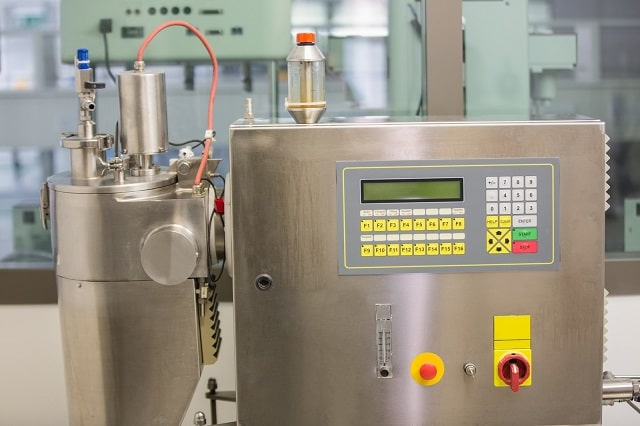Capacitive touch technology is increasingly used in user interfaces for a variety of devices. A capacitive touch display is created by attaching a capacitive layer on top of a glass panel substrate. These components are then covered with a protective outer layer, and the surface of the device will maintain a static charge. As a person’s finger or a stylus touches the surface, the charge will transfer from the panel surface to the device or finger. This allows the capacitive device to register the touch location.
Thin-film transistor (TFT) LCD capacitive touch screens have become a popular choice when compared to the other leading touch screen technology – resistive touch. While resistive touch screens have been around for a longer time and can be built at a lower cost, capacitive touch displays offer several significant advantages over other display technologies. In this post, we’ll explore what makes capacitive touch technology unique and how it performs across several parameters.

Capacitive touch technology offers excellent screen sensitivity when used with a finger or stylus. The surface of these devices will respond to varying degrees of pressure, as opposed to a resistive touch screen where firm and direct pressure must be used. A TFT LCD capacitive touch screen is also sensitive enough to be used only with fingers without the need for a stylus.
Capacitive stylus devices can be used for added precision and niche applications such as digital drawing. Another related benefit is support for multi-touch operation using multiple fingers simultaneously. This includes advanced gestures such as pinch-zoom that is a popular feature in many device applications today.
TFT LCD capacitive displays are known for their excellent optical quality. The glass substrate that sits below the electrode film transmits most of the available light to the surface resulting in crisp sharpness and display contrast. These screens are also known for outstanding color fidelity that supports the viewing of high-quality images, video, and software content. This also has a positive impact on the user experience when integrated into larger kiosks and interactive displays.
Capacitive touch devices are very stable, with little to no shift in the image being transferred to the screen. This is an important advantage over other display types, as image shift can get worse over time and require manual correction with other types of displays. A capacitive touch device, therefore, does not require the periodic calibrations that are commonly necessary with many older display technologies. Maintaining a stable image is an essential requirement in high-performance display applications, such as those found in the broadcasting and entertainment industries.
The glass substrate of a capacitive touch display is very strong, and the protective layer helps prevent scratches and other marks. Like most displays, a capacitive touch screen can crack if dropped or exposed to significant pressure. It should be noted that a cracked resistive touch screen most often ceases to operate, while a cracked capacitive device will usually maintain some functionality. This has made capacitive screens popular for commercial applications that are exposed to significant wear and tear.

The screen of a capacitive touch device can be completely sealed, preventing contaminants from entering the seams on the outer edges of the display. Preventing dust and condensation from getting inside the display is important for long-term use. This also makes a capacitive touch display easy to clean. Due to the ease of cleaning and other advantages, capacitive touch technology is often used for public digital displays in high-traffic areas.
The sensitivity of a capacitive touch display also contributes to excellent response times. As a user touches the screen at different locations, the surface can register these movements with a high degree of accuracy. A capacitive touch screen also performs very well when the user’s finger or stylus is dragged across the surface. This makes capacitive touch a preferred choice for graphic design and audio-visual applications.
One final advantage of capacitive touch technology is false touch rejection. A resistive display can be easily confused if multiple fingers touch the screen at the same time, making it unable to register accurate movement. The improved sensitivity of a capacitive display increases the ability of the surface to differentiate between multiple points of contact. In addition to enabling the custom gestures, sliding motions, and light touches mentioned above, this also eliminates the potential for a missed touchpoint.
Capacitive touch is a relatively new touchscreen technology that is having a significant impact on the display industry. With several advantages over competing design options, the use of TFT LCD capacitive touch technology is expected to grow significantly in the coming years. This will be an important trend for device manufactures, designers, and end-users to follow as an opportunity to improve product quality and performance.
Our sales engineers are experts in automatic asset tracking, tagging and identification,a nd can answer all your questions. Get in touch now.
Lets Talk ›